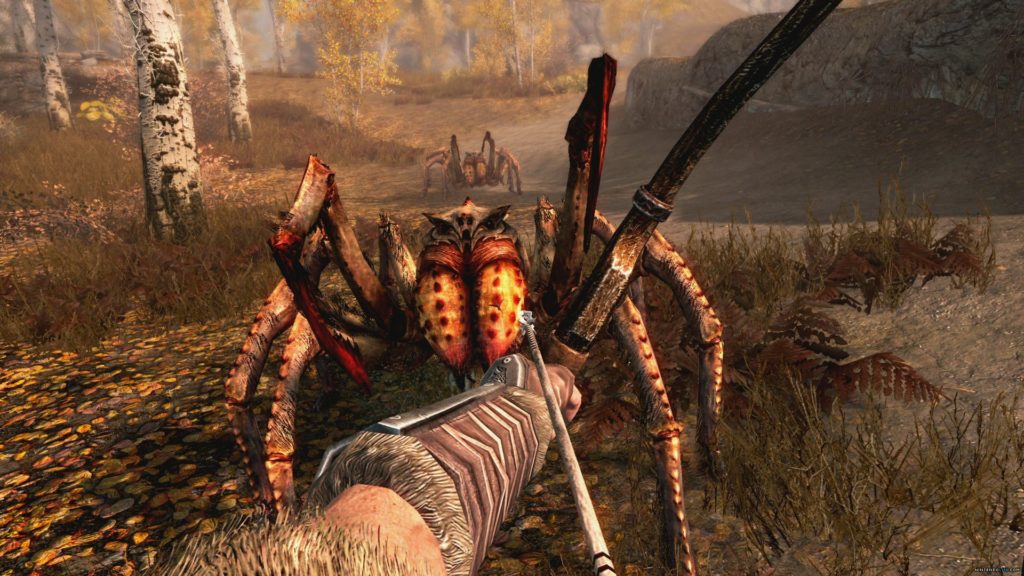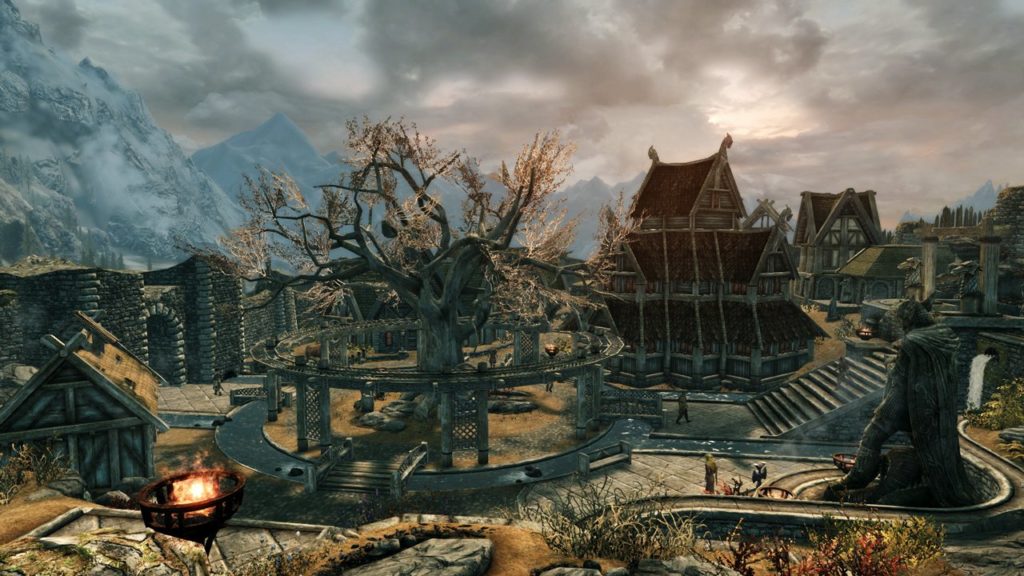The Elder Scrolls V: Skyrim (Switch, and many others…)
 Why talk about a 6 ½ year old videogame? The Elder Scrolls V: Skyrim has now been ported to the Nintendo Switch, making this the first portable version of the title. Players can take their exploration-based fantasy RPG with them on the go. If you haven’t yet tried this award-winning RPG or if you’re a huge fan and want to be able to play anytime or anywhere that you like, the Switch version is a great place to start.
Why talk about a 6 ½ year old videogame? The Elder Scrolls V: Skyrim has now been ported to the Nintendo Switch, making this the first portable version of the title. Players can take their exploration-based fantasy RPG with them on the go. If you haven’t yet tried this award-winning RPG or if you’re a huge fan and want to be able to play anytime or anywhere that you like, the Switch version is a great place to start.
The story of Skyrim focuses on a loner character briefly arrested for being on the wrong side of the government. A dragon attack provides cover for a quick escape and leaves you alone, able to freely explore the rich land of the province of Skyrim. While there is an overarching goal of progressing along a path to discover hidden dragon-like powers, the meat and potatoes of Skyrim lies in its multitude of quests to pursue and abilities to improve.

As the side quests start to accumulate, they can become almost overwhelming in number. Thankfully, there are features to help sort and keep track of them as you travel. Things still get a bit busy, but they help to keep things at least slightly manageable. Rather than killing monsters and performing quests to gain levels of power, Skyrim rewards players for using their abilities. Using skills (such as archery, stealth, or smithing) slowly builds up one’s proficiency in that skill, and gains in skill proficiencies are what give character experience towards a new character level. Gaining a level gives a choice of giving a character more health, Majicka (spell power), or stamina (used in running and combat.) In order to keep all quests interesting and useful, encounters are scaled to a player’s current level. This means less “grinding away” at meaningless tasks to gain experience before attempting harder battles, but also means that those battles will remain difficult no matter how many levels you gain. However, the game has several difficulty levels and you can freely switch between them (except for the highest) as you progress.
The strength of the game, and why it still holds up after six years, is its strong story-oriented questing system and its open-ended character development. Quests are available for all sorts of tasks and experiences and most can be resolved in two or more ways. Players can pursue a path of “good” or “evil” (or a mix) and join sides with almost any faction in the game. Characters have many viable options for skills as well. Want to be a sword-wielding werewolf with a heart of gold? Prefer to be a sneaky archer working to bring down The Man? Maybe a spell slinging magic user for hire. All are possible, so completing the game more than once can provide a very different experience.

Verdict:
Any fan of videogame RPGs needs to give Skyrim a try. Its real-time, action-oriented gameplay may not appeal to the run-based RPG fan, but its depth of story and open ended world to explore make the game deserving of a second look. The Switch isn’t the most powerful console out there, but as an older game, Skyrim suffers very little (if any) for it. The ability to slap it into the dock to play it on a big screen TV or pick it up and play on the go brings something entirely new to the Skyrim experience. This is perfect for my gaming style, as family obligations tend to provide me with far more gaming time on the go than on the living room TV. If you have already played Skyrim to death, there’s nothing new on the Switch version (it does include the main DLC from the original game) to bring you back. However, if you have thought about maybe giving the game another go to check out storylines you skipped, the Switch version is a great candidate. Its multitude of quest opportunities and wide open world to explore demonstrate why it is repeatedly listed as one of the best videogame RPGs of all time.
Kid Factor:
Nintendo always tries to connect with families to provide family-friendly gaming. Skyrim, on the other hand, is targeted at a more mature audience. The occasional, particularly skillful attack will result in a minor cut-scene kill that can be a bit dramatic (spiking into someone with a sword or arrow, complete with a fair bit of blood and/or gore.) The open-ended quest system allows players to work on the “wrong side of the law”, although there are consequences to a player’s actions. Mature themes like drinking and brawling make an appearance and some of the quests involve questionable actions, although sexual references and/or actions are much less frequent. Almost all interactions are voiced, so reading is not a requirement but my recommended maturity level should be far above that. With the themes involved and graphical content, I would peg the game best for kids in their upper teens or older.





Discussion Area - Leave a Comment